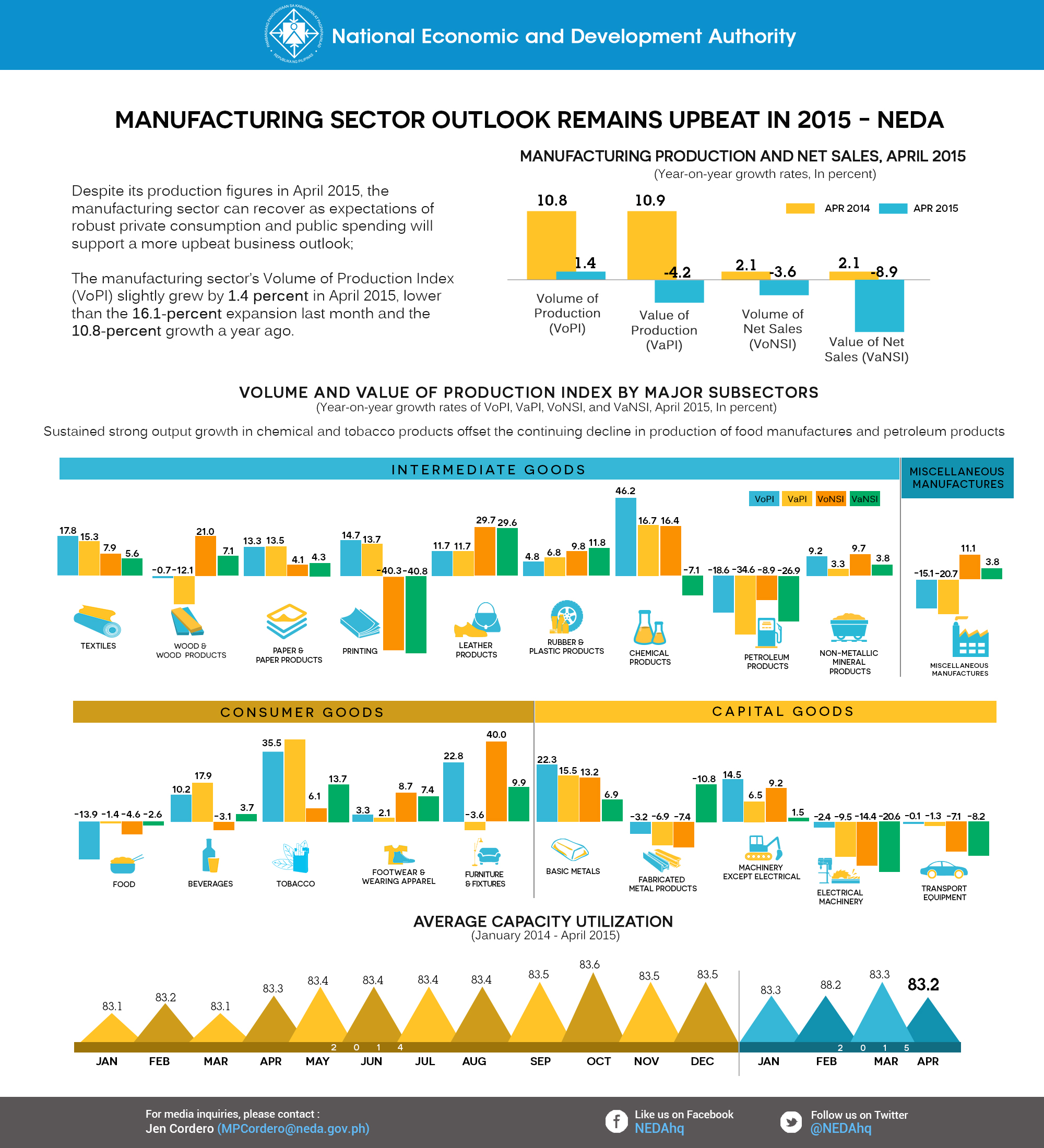MANILA – Production of the manufacturing sector increased slightly in April 2015 but the outlook remains upbeat with expectations of robust private consumption and public spending, according to the National Economic and Development Authority (NEDA).
In the Philippine Statistics Authority’s Monthly Integrated Survey of Selected Industries (MISSI) released today, the manufacturing sector’s Volume of Production Index (VoPI) slightly grew by 1.4 percent in April 2015, lower than the 16.1-percent expansion last month and the 10.8-percent growth a year ago.
Meanwhile, the sector’s Value of Production (VaPI) contracted by 4.2 percent in the period, down from the 9.7-percent growth in the previous month and the 10.9-percent expansion in April 2014.
“Despite the April 2015 numbers, investors remain confident of the growth prospects. Proof of this is the recent expansion of Taiheiyo Cement Philippines, Inc.’s facilities in San Fernando, Cebu to boost productive capacity in anticipation of higher demand for construction materials,” said Economic Planning Secretary Arsenio M. Balisacan.
“A number of Japanese firms are also poised to relocate to the country. In addition to the supply of skilled labor, some firms also want to maximize duty-free benefits in the Philippines under the European Union’s Generalized Scheme of Preferences Plus,” he added.
Meanwhile, average capacity utilization remained at 83.2 percent during the period. The basic metals subsector had the highest average capacity utilization at 88.8 percent in April 2015, slightly higher than the 88.5 percent last year.
“Since basic metals are among the backbone industries with high forward linkages, its high average capacity utilization will enhance firms’ capacity to respond to the increasing demand of other subsectors, particularly the rapid growth in private construction and the expected realization of government infrastructure projects,” said Balisacan, who is NEDA Director-General.
Among the surveyed firms, 26.4 percent operating at full capacity (90-100%), 55.3 percent at (70-89%) and 18.3 percent operating at below (70%) capacity.
The chemicals and tobacco industry sustained their strength for the period, countering the slowdown in the production of food and petroleum products. Also, leather, printing, basic metals, and machinery (except electrical) registered double-digit growth.
However, Balisacan said that despite the positive outlook, the adverse effects of El Niño and uncertainties in the global market still pose significant risks.
“The government must encourage more value-adding activities, especially those that increase the linkage between agriculture and manufacturing. Production would need to diversify further to areas and subsectors, for this to be realized, an efficient transport and logistics network should be put in place,” he said.
He also reiterated the country’s need continuously undertake efforts in improving business climate, address its long-standing power security issues, and diversifying the country’s range of products.
“We need to enhance the ability of SMEs to participate in regional and global markets, in line with the ASEAN economic integration, and pursue diversification of export products and markets, given uncertainties in global demand. This is vital to sustain the global competitiveness of the country and survive the low demand from the country’s top export markets,” said Balisacan.
–END–




